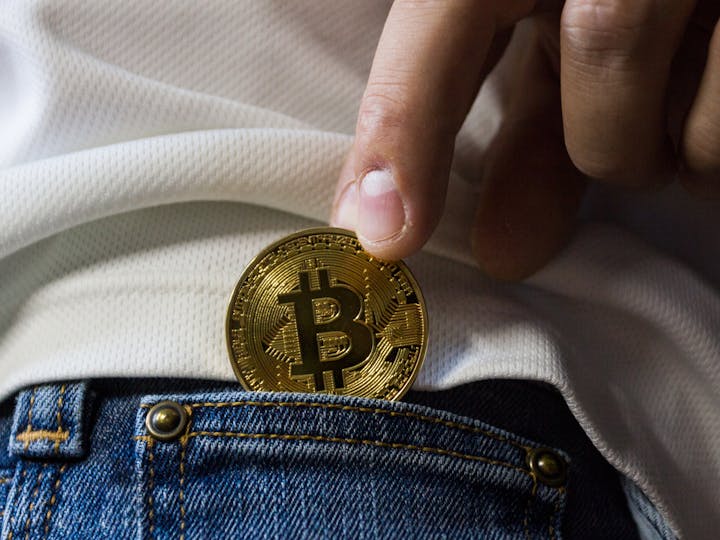Navigating the waters of Bitcoin ATMs can feel like sailing through a foggy sea, especially when it comes to the question of whether you’ll need an ID to access these digital treasure chests near you.
While the idea of anonymous transactions may tug at your curiosity, the reality is that regulatory nets cast by governments worldwide often require some form of identification. This necessity varies widely from one machine to another, influenced by local laws and the ATM operators’ policies.
Unraveling this tapestry of requirements will not only ensure a smoother transaction but could also safeguard your privacy in ways you hadn’t anticipated. Let’s explore what lies beneath the surface of using a Bitcoin ATM, without losing sight of the importance of your personal security and legal compliance.
Understanding Bitcoin ATM Regulations
Navigating through the world of Bitcoin ATMs, you’ll find that regulations vary significantly across different jurisdictions. In some countries, you’re faced with strict rules that mandate operators to adhere to comprehensive anti-money laundering (AML) policies. These may include collecting detailed information about users, even for small transactions. Conversely, in other places, the approach is more relaxed, allowing you to buy or sell small amounts of Bitcoin with minimal to no identification.
The reason for this disparity lies in how each jurisdiction interprets the risk associated with cryptocurrencies and their commitment to combating financial crimes. You’ll notice that in regions with stringent financial regulations, operators must register with the relevant financial authority, which usually imposes a set of guidelines aimed at preventing illicit activities.
Before you head out to use a Bitcoin ATM, it’s crucial to check the specific requirements in your area. This preparation can save you from unexpected hurdles, ensuring a smooth transaction. Remember, knowledge of the local regulations not just protects you but also enhances the overall security and integrity of the cryptocurrency ecosystem.
Why ID Verification Matters
Understanding the local regulations for Bitcoin ATMs prepares you for their ID requirements, highlighting why verifying your identity is crucial for both users and operators. This step isn’t just a formality; it’s about ensuring a safe and compliant environment for cryptocurrency transactions. By requiring ID verification, Bitcoin ATM operators can prevent fraud and money laundering, two risks that could otherwise tarnish the crypto industry’s reputation.
For you, the user, ID verification means your transactions are secure and traceable, protecting you from potential scams. It also contributes to a transparent financial ecosystem where everyone plays by the rules, making it harder for illicit activities to go unnoticed. This layer of security ensures that your investment in cryptocurrencies remains legitimate and that the digital currency market continues to gain trust and stability.
Moreover, complying with ID verification processes demonstrates the crypto community’s commitment to regulatory compliance, which is essential for its long-term acceptance and integration into the broader financial system. So, while it might seem like a hurdle, providing your ID at a Bitcoin ATM is a step toward a safer, more reliable, and globally accepted cryptocurrency landscape.
Common ID Requirements
Most Bitcoin ATMs will ask for some form of government-issued identification, such as a passport or driver’s license, to complete a transaction. This requirement is part of a broader effort to comply with regulatory standards, aiming to prevent fraud and illegal activities. You might wonder why you need to show ID for what seems like a straightforward transaction. Well, it’s all about ensuring the security and legality of the exchange.
Additionally, you may be required to provide a phone number for transaction verification purposes. Don’t be surprised if the machine prompts you to enter a verification code sent to your phone. This extra step is a security measure, ensuring that the person conducting the transaction is indeed you.
In some cases, the amount of Bitcoin you’re buying or selling can influence the ID requirements. For small transactions, a simple phone number might suffice. However, for larger transactions, you’ll need to provide more substantial proof of identity. It’s also worth noting that the definition of ‘small’ and ‘large’ transactions can vary significantly from one Bitcoin ATM to another.
Understanding these common ID requirements will make your visit to a Bitcoin ATM smoother and more efficient.
Steps for Using a Bitcoin ATM
To start using a Bitcoin ATM, you’ll first need to locate one near you through an online directory or app.
Once you’ve found a Bitcoin ATM, the next step is to verify your identity, if required. This step might involve scanning a government-issued ID or entering your phone number to receive a verification code. Remember, the ID requirements can vary significantly from one machine to another.
After you’ve completed the identity verification process, you’ll then choose the transaction you want to perform – buying or selling Bitcoin. If you’re buying, you’ll need to enter the amount in fiat currency you wish to spend or the amount of Bitcoin you want to purchase.
Next, you’ll scan your Bitcoin wallet address using the ATM’s scanner. This step is crucial for ensuring your Bitcoin is sent to the correct wallet. If you’re selling Bitcoin, the process involves sending Bitcoin from your wallet to the address provided by the ATM.
Privacy and Security Considerations
While using a Bitcoin ATM, you should prioritize your privacy and security to protect your personal information and funds. Always be aware of your surroundings when entering or leaving the ATM location. It’s not uncommon for thieves to target individuals who they’ve seen make transactions at Bitcoin ATMs.
Make sure you’re using a Bitcoin ATM from a reputable operator. Check for reviews online or ask for recommendations in cryptocurrency forums. Reputable ATMs have security measures in place, such as SSL encryption for the transaction, which helps in safeguarding your data.
Be cautious about sharing your transaction details, including QR codes or transaction IDs, with anyone. Scammers often pose as support staff or fellow users to phish for your sensitive information. If you’re unsure or feel uncomfortable about a transaction, it’s better to cancel it than risk your security.
Lastly, always verify the address you’re sending funds to. One typo can direct your funds to a different wallet, and unlike traditional bank transactions, Bitcoin transactions are irreversible. Taking these steps not only ensures your privacy and security but also makes your experience with Bitcoin ATMs smoother and more secure.
Navigating Local Laws
Understanding your local laws is crucial before using a Bitcoin ATM, as regulations can vary significantly from one jurisdiction to another. In some areas, you might find yourself navigating through minimal requirements, while in others, you could be facing strict identity verification processes, all in the name of combating money laundering and ensuring financial security. It’s not just about whether you need an ID; it’s also about understanding the limits on transactions and whether there are reporting thresholds that trigger additional scrutiny.
To stay on the right side of the law, you’ll want to do a bit of homework. Start by checking the website of your local financial regulatory authority. They often have guidelines and FAQs that can shed light on what’s expected from both users and operators of Bitcoin ATMs. Don’t underestimate the importance of this step; failing to comply with local regulations can lead to hefty fines or even criminal charges in extreme cases.
Conclusion
In summary, when you’re planning to use a Bitcoin ATM near you, you’ll likely need an ID due to regulatory reasons. ID verification is crucial for security and compliance with laws.
The common requirements include a government-issued ID. To use a Bitcoin ATM, follow the straightforward steps provided, but always keep privacy and security in mind.
Remember, local laws vary, so it’s essential to familiarize yourself with them before heading to a Bitcoin ATM. Stay informed and prepared.


